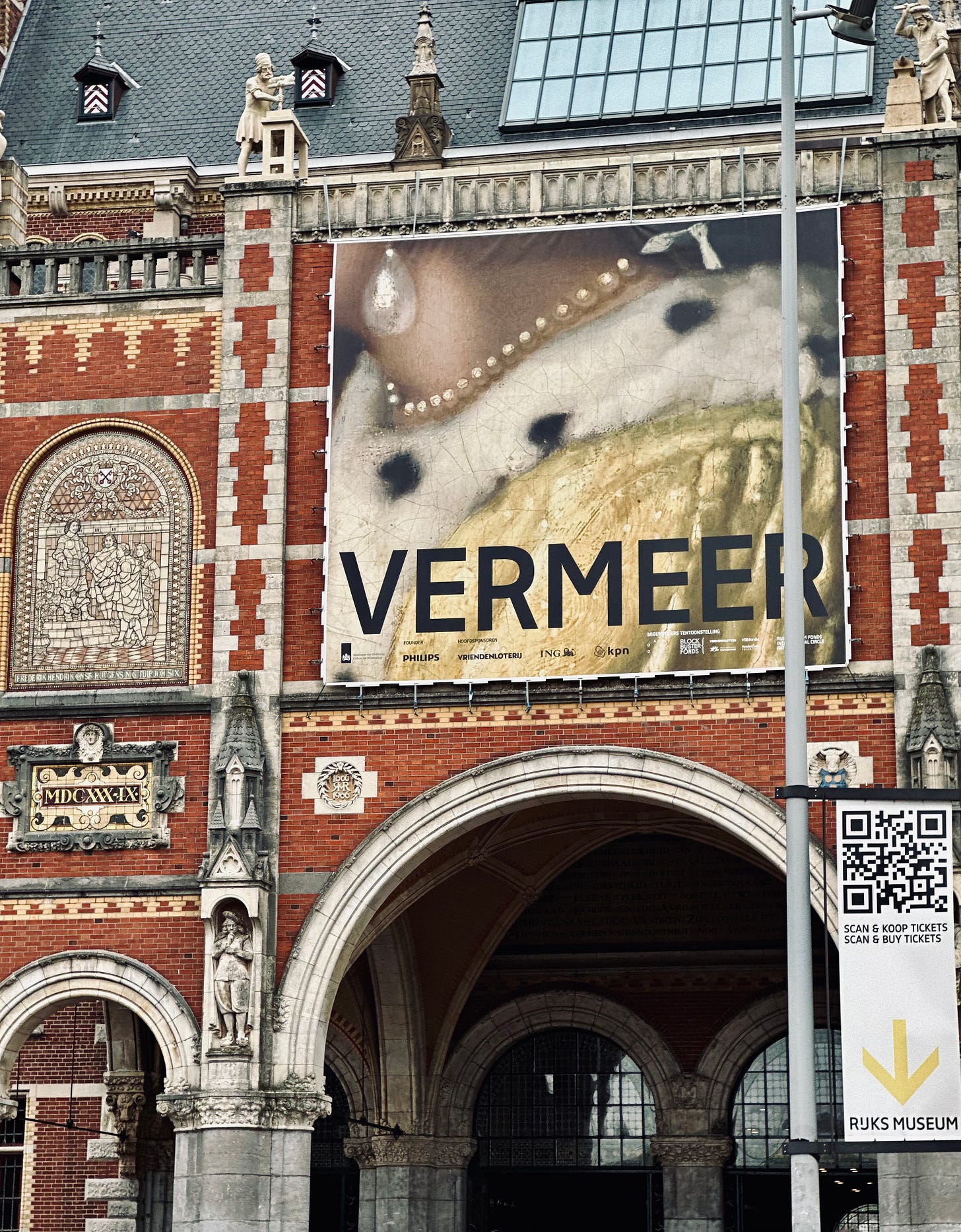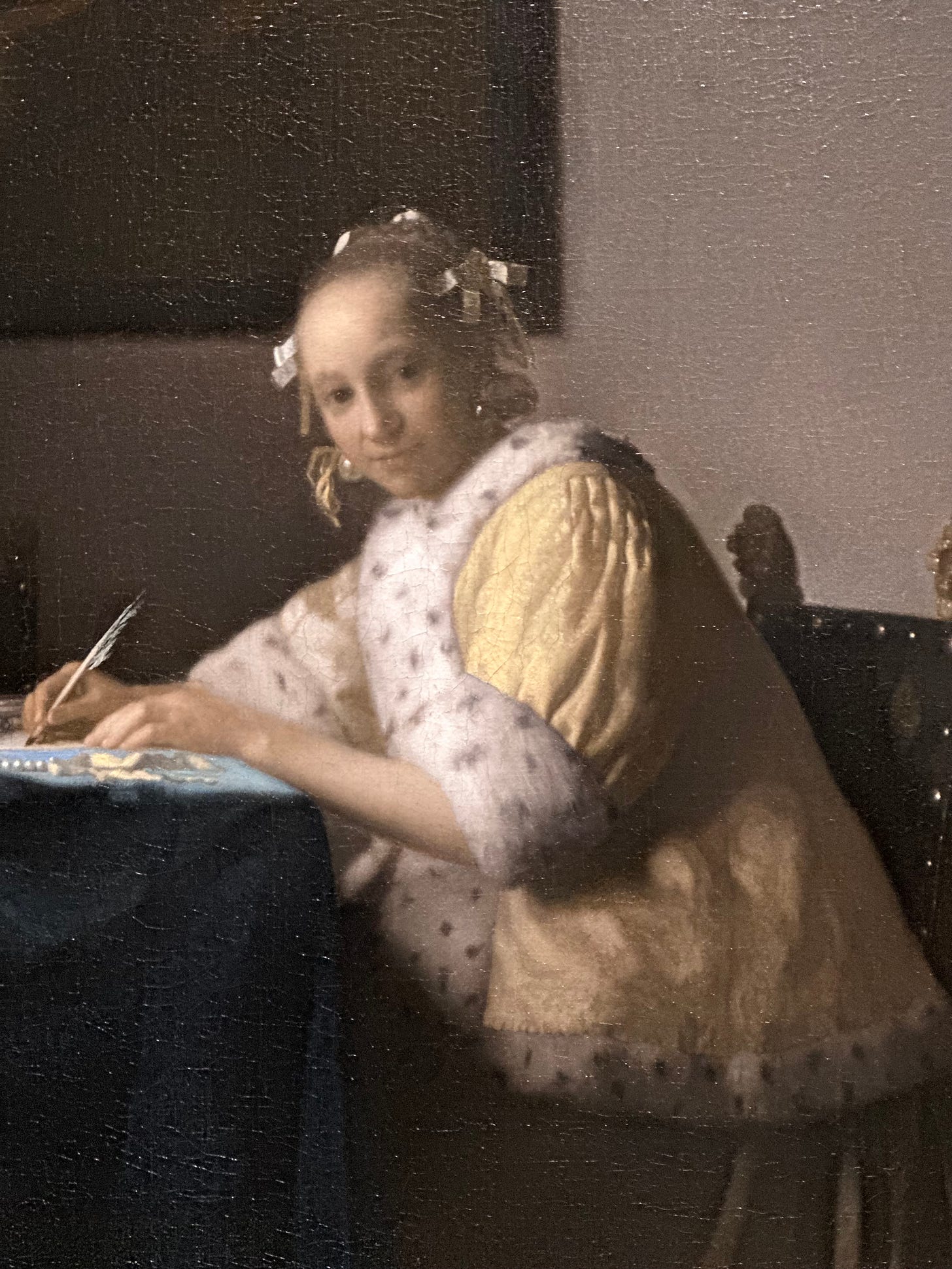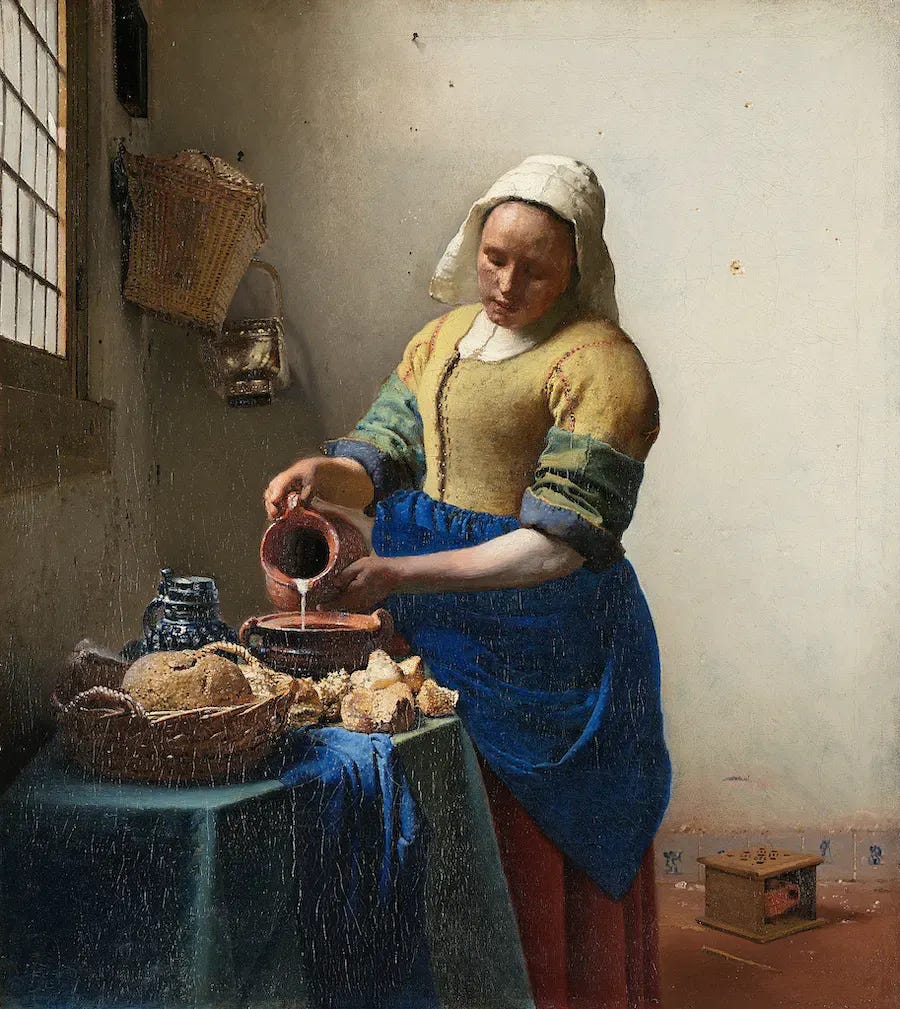Vermeer
Notes from the exhibition
There was just a little chill in the air as my dear friend and collaborator Stephan Crasnenscki and I, walked past the canals, coffee shops and perused the bookstalls of Amsterdam. Then at 4 in the afternoon we headed to the Vermeer exhibition at the Rijks Museum. It was quite crowded but the people were civilized, all waiting for a turn to get a closer look at each masterwork, seeming as pearls strung from one room to another. It was the first such exhibition- 28 of his 37 known works together in one space! I only took a few photographs, specifically to show you, as I could hardly bare to look at the work through a phone lens. For instance, I didn’t get a shot of the appealing Geographer, whom I had a crush on when I was young. Leave it to me to moon over a guy from the 17th century, one in a painting no less! But I was thrilled to see him in person, his map spread open, bathed in natural light, staring into space as though envisioning faraway places. Vermeer’s light typically generates from the left; standing at least thirty feet away it seemed to glow from within the empty wall framing The Milkmaid.
Vemeer had many debts, 11 living children, and worked slowly, selling only two paintings a year. His wife believed financial stress killed him, for he died suddenly at the age of 42, penniless, with nothing to to sustain his family. Paintings were traded to pay off a sizable grocery and butcher bill, works that are beyond price today. Perhaps because of his meagre resources the same garments and backgrounds were used, Vermeer’s little corner of Delft. In the two exquisite works below the same yellow silk jacket trimmed in ermine is worn by the same model, perhaps a daughter. The lively girl in the red hat is thought to be yet another daughter, who also modeled for the painting The Girl in the Pearl Earring. The film by the same name is fiction, but is beautifully shot, successfully employing the beautifully atmospheric Dutch light. I mention the film as I really liked it, but it’s important to remember it was inspired by art not by life.
I once visited Delft with my son. It was apparent that the sun still shines as it did in the 17th century. Life is not always fair. The Artist, the Vermeer children and his noble wife did not receive accolades, wealth and comforts in their lifetime. But they are seen gracing the handful of works admired by all who are lucky enough to stand before them. Just as my friend Stephan and I, standing amongst the fold, tourists, art lovers and curious children. Now I am off, the evening approaches and hopefully I can still catch a bit of that revered light, maybe running into the ghost of the geographer.







PS: Some of you probably know the poem called “Vermeer” by the Nobel Prize winning Polish poet, Wisława Szymborska. For anyone who doesn’t -- and even if you do -- here it is:
So long as that woman from the Rijksmuseum
in painted quiet and concentration
keeps pouring milk day after day
from the pitcher to the bowl
the World hasn’t earned
the world’s end.
- translated from the Polish by Clare Cavanagh and Stanislaw Baranczak
So long as that woman from the Rijksmuseum
in painted quiet and concentration
keeps pouring milk day after day
from the pitcher to the bowl
the World hasn’t earned
the world’s end.
Szymborska